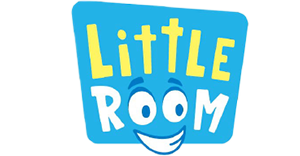Email format error
Email cannot be empty
Email already exists
6-20 characters(letters plus numbers only)
The password is inconsistent
Email format error
Email cannot be empty
Email does not exist
6-20 characters(letters plus numbers only)
The password is inconsistent

News
Happy Arts & Crafts , your reliable partner for OEM/ODM business!

Unlocking Fun and Learning with 3D Puzzle Games Toys Set
In a world where screens often dominate playtime, 3D puzzle games toys sets emerge as a beacon of tactile, engaging fun that combines the joy of play with the benefits of educational enrichment. These intricate toys are more than mere pastimes; they are tools that foster creativity, enhance spatial awareness, and improve problem-solving skills. In this comprehensive guide, we’ll delve into the multifaceted world of 3D puzzle games toys sets, exploring their benefits, the variety available, and tips for choosing the perfect set for your child or even for yourself.
The Benefits of 3D Puzzle Games Toys Sets
Cognitive Development
Enhancing Problem-Solving Skills
3D puzzle games toys sets are a fantastic way to challenge the mind and enhance problem-solving skills. Unlike traditional 2D puzzles, 3D puzzles require a more complex level of thinking. They demand visualization of the finished product and an understanding of how each piece fits into a three-dimensional space. This type of problem-solving can be directly applied to real-world situations, where thinking in multiple dimensions is often necessary.
Boosting Spatial Awareness
Spatial awareness is the ability to understand and interact with the environment around us. It’s a critical skill for navigating through everyday life. 3D puzzles put this skill to the test by requiring players to manipulate pieces in a way that they fit together in all three dimensions. This can be particularly beneficial for children, whose spatial reasoning skills are still developing.
Improving Memory and Concentration
The process of completing a 3D puzzle requires a good memory to recall the shape, size, and color of various pieces and how they interconnect. Concentration is also key, as building a 3D puzzle can be a time-consuming task that requires sustained attention. Regularly engaging in this kind of activity can lead to improvements in both memory and concentration over time.
Educational Advantages
Learning Through Play
3D puzzle games toys sets offer a unique opportunity for learning through play. They can introduce concepts of geometry, physics, and engineering without the need for formal education. As children (and adults) play with 3D puzzles, they’re often learning without even realizing it, as the act of playing naturally engages their curiosity and desire to understand how things work.
STEM Skills and 3D Puzzles
Science, Technology, Engineering, and Mathematics (STEM) skills are increasingly important in our technology-driven world. 3D puzzles can serve as an early introduction to these subjects. For example, building a 3D puzzle of a bridge can lead to discussions about engineering principles, while a puzzle of a globe can spark conversations about geography and the natural sciences.
Language and Communication Enhancement
While it may not be immediately obvious, 3D puzzles can also enhance language and communication skills. As children describe what they are doing or ask for help, they are practicing how to communicate their thoughts and ideas. For those working in groups, it’s an opportunity to learn new vocabulary related to shapes, structures, and the building process.
Emotional and Social Growth
The Role of Patience and Perseverance
3D puzzles can be challenging, and completing them often requires patience and perseverance. These are valuable life skills that can help individuals in many different situations. The satisfaction of completing a puzzle after investing time and effort can be a powerful experience, reinforcing the idea that persistence pays off.
Encouraging Teamwork and Collaboration
Many 3D puzzles are complex enough to benefit from teamwork. Working together to solve a puzzle can improve social skills such as sharing, taking turns, and collaborating. It’s also a great way for families to spend quality time together, fostering a sense of accomplishment and unity.
Building Confidence Through Achievement
Completing a 3D puzzle is an achievement that can boost confidence. For children, this sense of accomplishment can be particularly impactful, as it shows them that they can tackle and overcome challenges. This confidence can carry over into other areas of their lives, encouraging them to take on new tasks and challenges with a positive mindset.
Types of 3D Puzzle Games Toys Sets
Wooden Puzzles
The Classic Charm of Wooden Pieces
Wooden 3D puzzles have a timeless appeal. They are often crafted with a high level of detail and can be painted or left with a natural finish. The weight and feel of wooden pieces offer a tactile experience that plastic and metal puzzles cannot match. Wooden puzzles are also durable, making them a long-lasting addition to any toy collection.
Durability and Timelessness
The durability of wooden puzzles not only makes them a practical choice but also lends them a sense of timelessness. They can be passed down from generation to generation, becoming family heirlooms. The classic designs often found in wooden puzzles can be appreciated by all ages, making them a staple for any puzzle enthusiast.
Plastic and Magnetic Sets
Versatility and Bright Colors
Plastic 3D puzzles come in a wide variety of shapes, sizes, and colors. They are often lightweight and can include magnetic pieces that stick together, making them easier to handle for younger children. The bright colors and versatility of plastic puzzles make them an attractive option for those looking to add a pop of color to their puzzle-solving experience.
Ease of Use and Safety Considerations
When it comes to safety, plastic puzzles are often designed with smooth edges and non-toxic materials, making them suitable for younger children. The ease of use also extends to the cleaning process, as plastic can be easily wiped down and sanitized—a valuable feature for toys intended for multiple users or classroom settings.
Metal and Mechanical Models
Intricacy and Detail
Metal 3D puzzles, often referred to as mechanical models, are known for their intricacy and fine detail. They can range from simple designs to complex structures with moving parts. These puzzles are typically aimed at older children and adults due to the precision required to assemble them.
For the Budding Engineer
Mechanical metal puzzles are an excellent choice for those with an interest in engineering and mechanics. The process of assembling gears, levers, and other components can provide insight into how machines work. These puzzles often result in a functional model that can be displayed and admired long after the building process is complete.
Educational Sets
Themed Learning: From Dinosaurs to Space Exploration
Educational 3D puzzles often come in themes that can spark a child’s interest in a particular subject. From prehistoric creatures to spacecraft, these puzzles can serve as a springboard for learning about history, science, and technology. They can also be used in educational settings to complement lessons and provide a hands-on learning experience.
Interactive 3D Puzzles for Enhanced Learning
Some educational 3D puzzles are interactive, featuring elements that move or change once the puzzle is completed. This interactivity can help reinforce the concepts being taught, as children can see and manipulate the results of their efforts. For example, a 3D puzzle of the human body with removable organs can be an excellent tool for teaching anatomy.
Age-Appropriate 3D Puzzles
Toddlers and Preschoolers: Safe and Simple: The First Steps into 3D Puzzling
For toddlers and preschoolers, 3D puzzles are an excellent way to introduce them to the concept of spatial relationships and problem-solving. At this age, puzzles should be simple, with large, easy-to-handle pieces that are safe for little hands. Look for puzzles made of durable, non-toxic materials with smooth edges to prevent any injuries.
Sensory Development and Motor Skills
3D puzzles are not just about putting pieces together; they also play a crucial role in sensory development and fine motor skills. As toddlers manipulate the pieces, they develop hand-eye coordination and dexterity. Textured puzzles can also provide tactile feedback, which is essential for sensory development.
School-Aged Children: Complexity and Challenge: Growing with the Puzzle
As children grow, they require more complex puzzles that challenge their developing cognitive abilities. School-aged children can handle more intricate designs with smaller pieces that require more precise assembly.
Integrating Puzzles into School Subjects
3D puzzles can be a fun way to reinforce concepts learned in school. For example, a 3D puzzle of the solar system can complement lessons in science, while puzzles of historical landmarks can make history lessons more tangible.
Teens and Adults: Advanced Models and Collectibles
For teens and adults, 3D puzzles can be highly detailed models that require patience and skill. These puzzles often become collectibles and can be displayed as accomplishments once completed.
The Therapeutic Benefits of Puzzling
Puzzling has therapeutic benefits for teens and adults, serving as a form of stress relief and mental exercise. It can be a meditative practice that helps in improving focus and mindfulness.
Choosing the Right 3D Puzzle Games Toys Set
Assessing Difficulty Levels
It’s important to choose a puzzle that matches the puzzler’s skill level. A puzzle that’s too easy won’t provide enough challenge, while one that’s too difficult can lead to frustration.
The Importance of Gradual Progression
Gradual progression in puzzle difficulty helps to build confidence and skills over time. Start with simpler puzzles and gradually move to more complex ones as the puzzler’s abilities improve.
Considering Interests and Themes
Aligning Puzzles with Passions
Choose puzzles that align with the puzzler’s interests, whether it’s architecture, animals, or machinery. This ensures that the puzzler remains engaged and motivated to complete the puzzle.
Expanding Horizons with Diverse Themes
Don’t be afraid to introduce new themes and subjects through puzzles. This can be a great way to expand horizons and spark new interests.
Quality and Durability
What to Look for in Materials and Construction
The materials and construction of a puzzle are important for its longevity. Look for sturdy materials that can withstand repeated use, especially if the puzzle is intended for younger children.
The Longevity of Your Puzzle Investment
Investing in high-quality puzzles means they can be enjoyed for years to come, possibly even passed down to younger family members.
Tips for Assembling 3D Puzzles
Getting Started
Organizing Pieces and Planning Your Approach
Before diving into the assembly of a 3D puzzle, it’s crucial to create a conducive environment for your puzzling adventure. Start by allocating a spacious and well-lit area where you can spread out your pieces and work comfortably. Organize the puzzle pieces by separating edges, colors, patterns, or any other distinguishing features that will help you during the assembly process. This initial sorting can significantly reduce the time you spend searching for the right piece later on.
Planning your approach is equally important. Consider starting with the base or frame of the puzzle, as this will give you a solid foundation to build upon. If your 3D puzzle is a model of a recognizable object, like a building or vehicle, familiarize yourself with its structure. This can provide valuable clues about where certain pieces should go.
Reading Instructions and Understanding Diagrams
Most 3D puzzles come with instructions or diagrams that guide you through the assembly process. Take the time to thoroughly read these before starting. Understanding the sequence of steps and how the pieces fit together conceptually will save you from potential frustration during the build. If the puzzle includes numbered or lettered pieces, use the diagrams to identify where each piece should be placed. Keep the instructions close by for easy reference as you progress.
During the Build
Patience and Strategy: Piece by Piece
Assembling a 3D puzzle is a test of patience and strategic thinking. It’s essential to take a methodical approach, fitting pieces together one at a time and verifying their placement before moving on. If you’re working on a particularly challenging section, try to visualize how the pieces should come together in three dimensions. Sometimes, stepping back and looking at the puzzle from different angles can provide new insights.
When to Take Breaks and How to Stay Motivated
It’s not uncommon to hit a wall during the assembly of a 3D puzzle. When you feel your concentration waning or frustration setting in, it’s a good idea to take a short break. Step away from the puzzle, stretch, have a snack, or engage in a different activity for a while. This can help clear your mind and renew your focus when you return. To stay motivated, set small goals, such as completing a particular section before taking a break, and celebrate these mini-achievements.
Troubleshooting Common Issues
Dealing with Missing or Misfit Pieces
Occasionally, you may encounter a piece that doesn’t seem to fit anywhere or, worse, discover that a piece is missing. First, double-check the sorting of your pieces and the assembly so far. Sometimes, a piece that seems out of place is simply in the wrong spot. If a piece is genuinely missing, contact the manufacturer as they may be able to provide a replacement. In the meantime, continue assembling other sections of the puzzle.
Adjusting Techniques for Different Materials
3D puzzles can be made from various materials, including wood, plastic, metal, and foam. Each material may require different handling techniques. For example, wooden pieces might need a gentle tap to fit snugly, while foam pieces might require a more delicate touch. Be mindful of the material you’re working with and adjust your technique accordingly to avoid damaging the pieces.
Incorporating 3D Puzzles into Family Time
Bonding Over Puzzles
Creating Memories with Collaborative Building
3D puzzles offer a unique opportunity for family bonding. Working on a puzzle together allows for collaborative problem-solving and communication. Each family member can take on a role that suits their strengths, whether it’s organizing pieces, reading instructions, or finding where each piece goes. The shared sense of accomplishment when the puzzle is completed can create lasting memories and a sense of unity.
Friendly Competition and Team Challenges
To add an element of excitement to puzzle assembly, consider setting up friendly competitions or team challenges. Divide the family into teams and see who can complete a section of the puzzle first or who can find the most pieces in a set amount of time. These friendly contests can make the puzzling experience more engaging for everyone involved.
Educational Family Fun
Learning Together with Themed Puzzles
Many 3D puzzles are designed with educational themes, such as historical landmarks, scientific concepts, or natural wonders. Assembling these puzzles can spark curiosity and lead to learning opportunities. Discuss the significance of the puzzle’s theme, research related topics, and share interesting facts as you build. This not only enriches the puzzling experience but also reinforces new knowledge in a fun and interactive way.
Encouraging Questions and Exploration
Encourage family members, especially children, to ask questions and explore further. If a puzzle depicts a famous building, for example, you might explore its history, architecture, and cultural significance. This can lead to a deeper appreciation of the subject and inspire a love for learning that extends beyond the puzzle itself.
Conclusion
3D puzzles are a fantastic way to engage the mind, enjoy quality time with family, and learn about the world in a hands-on manner. By following these tips for assembling 3D puzzles and incorporating them into family activities, you can transform a simple set of pieces into an enriching experience that strengthens bonds, educates, and entertains. Whether you’re a seasoned puzzler or new to the world of 3D puzzles, the journey of creating something beautiful and complex from individual pieces is a rewarding adventure that offers lessons and memories to last a lifetime.


